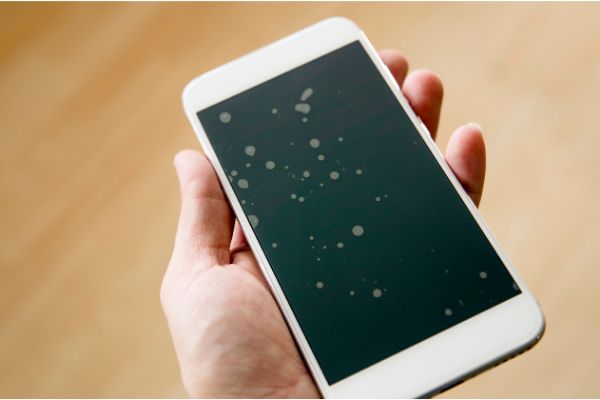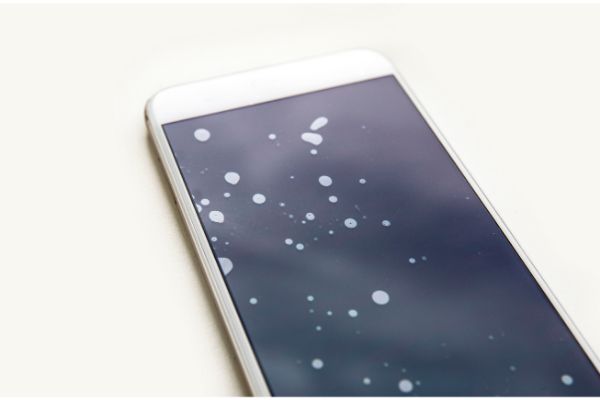Disclaimer: This post may contain affiliate links, meaning we get a small commission if you make a purchase through our links, at no cost to you. For more information, please visit our Disclaimer Page.
Modern phones and tablets allow us to do many things conveniently at home or out and about during the day. They are powerful, smaller versions of computers. Typically, their screens include robust panes of tempered glass that have chemicals in them to increase their durability. Despite this, it is not uncommon for accidental cracks to occur in some smartphone or tablet screens. This kind of thing might be unappealing to many users, but it can also degrade the overall sensitivity or functionality of the devices.
One way to combat this problem is through the use of screen protectors. These accessories provide extra layers of protection that go over the main screen of your tablet or smartphone. Although they are useful, they can create annoying air bubbles that stay trapped inside the screen area once you finish your installation. Our article today will go over what might be the main causes of the formation of these bubbles.
To help our readers out, we’ll also offer some helpful tips that might get rid of them for you. As we go along, we’ll also talk about whether the bubbles might disappear on their own, why the bubbles under your screen protector aren’t going away, why bubbles that have disappeared already might return, and how they might affect the sensitivity of your screen overall.
Table of Contents
What Causes Air Bubbles in Tempered Glass? (& How Do You Fix It?)
Most screen protectors for phones use a thin film or thicker pane of tempered glass to add some protection to the base panel underneath. The screens that manufacturers install in phones by default will usually use some form of Gorilla Glass for more durability.
Gorilla Glass uses special chemicals that harden the screen in order to make it more resistant to damage. Even with this special feature present, it is still possible that some accidents could cause big and small fissures in the screen itself. Protectors add yet another layer to the device, further insulating it from the possibility of damage.
This is all well and good, but air bubbles can appear in the layer between the screen protector and the base front panel of the phone. There are a few reasons why this might happen, and how you fix it can depend on the root cause for the bubbles appearing on your protector.
Firstly, the tempered glass itself might have some kind of fault in it. This sort of thing would have been present when the manufacturer was making the pane. If this is the case, you will need a different screen protector in order to rid yourself of the air bubble problem.
There is no way to work out this kind of fault yourself, and it represents a defect in the entire manufacturing process for the tempered glass. The air bubble becomes a part of the pane itself.
If your tempered glass has no such fault, you could still wind up with air bubbles. One of the major causes of this would be an improper application of the screen protector. If you do not apply your screen protector to your phone in a precise, delicate manner, air bubbles can form while you are installing the accessory.
There might be a couple of ways that you can fix this. One of the most common is to use a flat, card-shaped item in order to work the air bubble over to the edge of the screen protector and out of it. Before you try this method, you may wish to wrap the card object in a clean cloth. Doing so may prevent the tool from causing any damage to your screen protector.
Once you finish with the above preparations, you will need to place the card flat against the surface of the screen protector. For placement, you should aim for a spot that is just before the air bubble that you would like to remove. Swipe the card along the surface of the screen protector with gentle pressure.
This pressure should be strong and consistent enough to move the air bubble toward the edge of the screen protector. Once you have it there, you can keep swiping the card in order to move the bubble out of the screen protector entirely.
Dust on the screen itself is another common thing that can create air bubbles once you install a protector. If you do not clean the screen’s surface properly, you might leave tiny dust particles that will craft air bubbles during your installation of the protective accessory. Unfortunately, these bubbles tend to form in such a way that you cannot move them out with the card trick you learned above.
Much of this problem has to do with the dust particles themselves. They remain trapped in the middle of the screen, and they are the source of the bubbles. Your only option here is to apply a new screen protector. Be sure to clean the original screen thoroughly before you make your second attempt.
Do Tempered Glass Screen Protector Bubbles Go Away?
Some screen bubbles might go away on their own. However, whether the bubbles that plague your screen protector will decide to disappear depends on the type of bubbles they are. Furthermore, what formed the bubbles can also play a role here.
If you’re dealing with dust particles or imperfections in the screen, you can’t expect these bubbles to go away on their own. Although exceptions may exist, the source of these bubbles would require user intervention in order to go away.
However, your screen protector may develop some air bubbles due to moisture. If this is the case for you, it is likely that these kinds of bubbles should go away on their own. This excess moisture might lodge itself between the screen and the protector at some point, but it should resolve itself over time.
Why Won’t My Screen Protector Bubbles Go Away?
If you notice that some of your screen protector bubbles last for more than a few days, they are probably not moisture bubbles. Other types of air bubbles won’t disappear without your help. We’ve discussed the other major types of air bubbles you might get already.
For now, let us assume that you’ve tried some fixes we noted. If nothing has worked, it shows that there is a problem with the tempered glass directly. This is one of the reasons that you may have to purchase a new protector.
Why Does My Screen Protector Keep Getting Air Bubbles?
For this section, we will assume that you have removed air bubbles from your screen protector already. Even after this successful application of the protector, you might find that the air bubbles return periodically.
Should you find that you’re unable to get rid of the bubbles permanently, the problem will be with the screen protector itself. However, this is likely a different issue than the fault in the glass that we touched on earlier.
A perfectly good screen protector may be unable to keep bubbles from getting between it and the front panel of your phone. If this happens to you, the adhesiveness of the protector is the most likely culprit. In this case, the protector can still add a layer of security to the screen, but it is having trouble staying attached to the edges of the phone.
If the adhesive layer deteriorates, it is much easier for dust and other particles to get between the protector and the screen. This might happen frequently, and it means that air bubbles can reoccur every time the screen protector shifts.
There may be some fixes to deal with the adhesive parts of a screen protector, but many of them would be laborious. You’ll also end up with a protector that is subpar when compared to new ones that you can install properly. Your best bet is to get a new protector, check its adhesive layer, and install it very carefully over the surface of your phone.
Do Bubbles in Tempered Glass Affect Touch Sensitivity?
Typically, air bubbles in the glass should have no affect on touch sensitivity. This is true for most modern smartphones. However, some phones from an older generation may use resistive touchscreens.
In these types of phones, it is possible for air bubbles to interfere with how your device might register the touch of your finger. You may wish to make sure that you’re using a phone with different touch technology when you put a screen protector on it.
Conclusion
Screen protectors offer phone owners an affordable way to get extra security for their devices. However, they can come with air bubbles that are unsightly. These bubbles could be the result of faults in the protectors themselves, dust, or poor applications of the accessories.
While the bubbles should not affect any kind of touch response in most smartphones, most users would still prefer to remove the ones that they can. In any case, we have some troubleshooting solutions that should help you resolve these issues.


